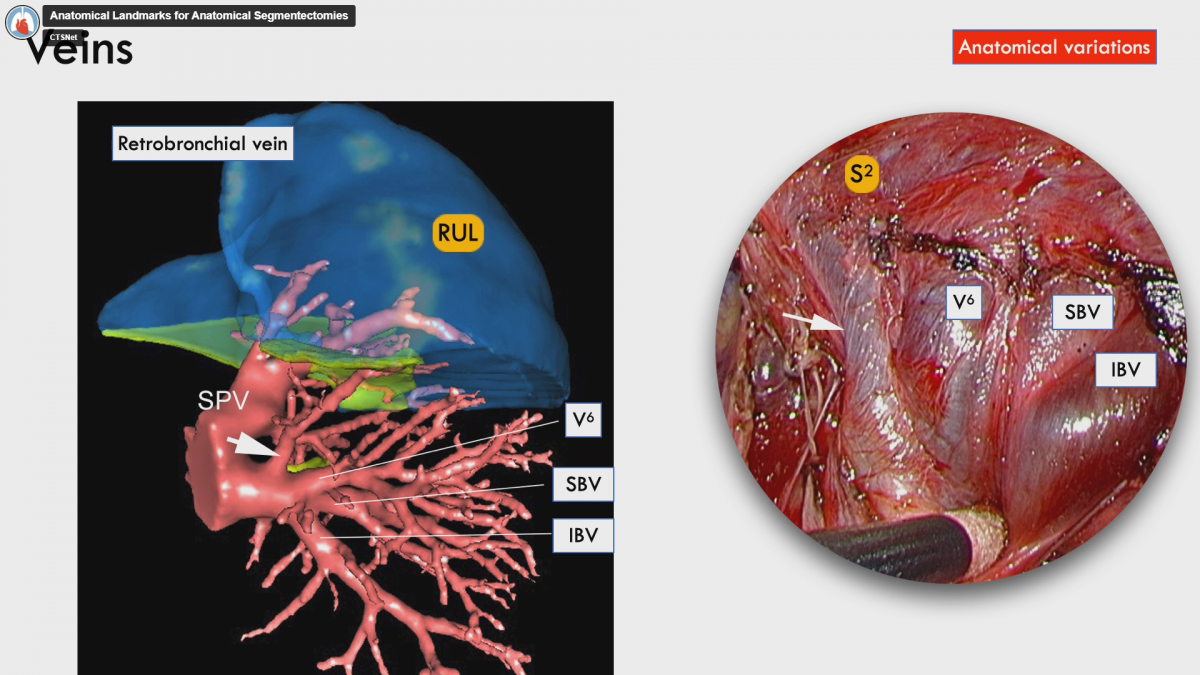ALERT!
This site is not optimized for Internet Explorer 8 (or older).
Please upgrade to a newer version of Internet Explorer or use an alternate browser such as Chrome or Firefox.
Perfecting the Segmentectomy: 3 Tips for Beginners from Dr. Dominique Gossot
When Dr. Dominique Gossot embarked on his program in segmentectomy ten years ago, he found that despite his extensive experience in thoracic surgery, his knowledge of pulmonary anatomy was lacking. “There is no standard anatomy, there are only variations, and these variations are very important to know,” he explains in the Guest Editor Series Webinar “Segmentectomy for Lung Cancer,” with guest editor Dr. Alan Sihoe as moderator.
Dr. Gossot, a thoracic surgeon at Institut Mutualiste Montsouris in Paris, goes on to reveal his tips to not only understanding pulmonary anatomy, but also using technology to better interpret the wide range of variations a surgeon encounters while performing a segmentectomy.
Tip 1: Use 3D Modeling Preoperatively and Intraoperatively
A 3D model, Dr. Gossot says, is a surgeon’s best friend both prior to and during a segmentectomy. Of course, a 3D model has some constraints, but studying a model in detail before the operation, and having it on hand during the procedure, can be crucial to understanding thoracic anatomy.

In his video, "Anatomical Landmarks for Anatomical Segmentectomies," Gossot demonstrates his use of a 3D model to identify anatomical variations.
Tip 2: Utilize Other Tools
While 3D models are a reliable element in Dr. Gossot’s practice, he makes it clear that sometimes, even if you have a very good model, you can get lost in the midst of the procedure.
“The reason you get lost is that sometimes the model looks very much like the normal anatomy, but sometimes you have either fibrosis or lymph nodes that you didn’t expect,” he says. “And there are some variations in the length and diameter of the bronchovascular elements between the model and intraoperative views.”
To supplement 3D models, Dr. Gossot recommends using other tools. One popular visualization tool is 3D printing, which Dr. Gossot says can have its limitations.
“The first limitation of a 3D printing model in the operating room is that, so far as I know, you have no model that you can sterilize, so you have to put the 3D printing into a plastic bag, which is not convenient at all to look at during the operation,” he says. “And if you are operating in a dark room, as we do, you have to light the room to see the 3D printing.”
To Dr. Gossot, the real breakthrough technology is the use of mixed reality with exposure of the model. “You have the model floating around you, and if you don’t want the model anymore you shut your head-mounted display—and that’s quite nice,” he says.
Studying a 3D model before a segmentectomy is important but keeping your technological options open can be even more crucial.
Tip 3: Perform the Procedure with an Extensive Dissection of Elements in the Fissure
Finally, Dr. Gossot points out that even if you have a good 3D model, it is important to perform the procedure with an extensive dissection of the elements in the fissure. He clarifies that this practice allows the surgeon to “have a very good exposure and clear view of all the vessels and bronchi.”
“[Don’t] rely on the 3D model, but perform a good dissection in the fissure. I think for this surgery, there is no place for the so-called ‘fissureless’ technique, this should be a fissure-based technique,” Dr. Gossot goes on to explain.
With Dr. Gossot’s combination of an accurate 3D model, innovative technology, and extensive dissection of elements in the fissure, a surgeon can expect to be well prepared for a segmentectomy. For more insight into segmentectomy for lung cancer, and to watch the full conversation between Dr. Sihoe and Dr. Gossot, head to the “Segmentectomy for Lung Cancer” Guest Editor Series Webinar.
Disclaimer
The information and views presented on CTSNet.org represent the views of the authors and contributors of the material and not of CTSNet. Please review our full disclaimer page here.




